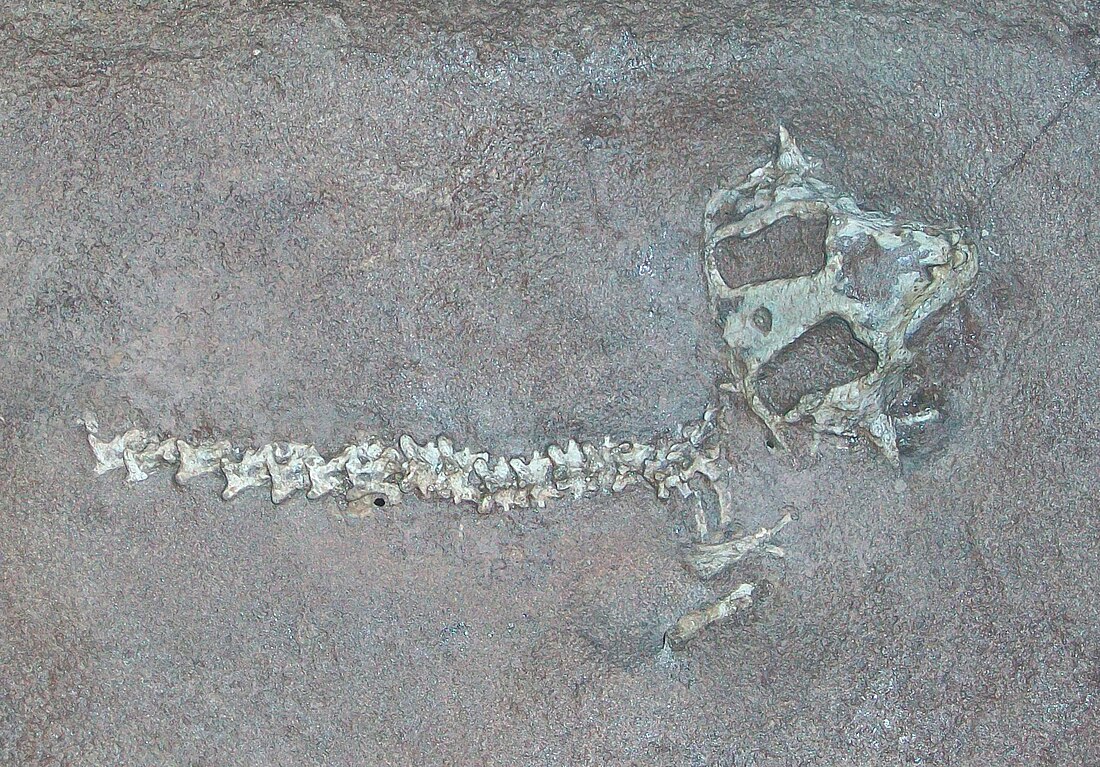Top Qs
Timeline
Chat
Perspective
Hypsognathus
Extinct genus of reptiles From Wikipedia, the free encyclopedia
Remove ads
Hypsognathus (from Greek: ῠ̔́ψος húpsos, 'height' and Greek: γνάθος gnáthos, 'jaw') is an extinct genus of procolophonid parareptile from the Late Triassic of New Jersey, Connecticut, and Nova Scotia.[1]

Hypsognathus resembled a moderately sized lizard, with a length of 33 centimetres (13 in), although it was unrelated to modern lizards. Because of its broad teeth, Hypsognathus is thought to have been a herbivore. Its body is low and broad and it has a relatively short tail. Hypsognathus has some spikes on the side of its head, probably for protection against predators.[2]
Multiple specimens from the Magnesian Conglomerate of England that were discovered during the 1970s by Jeanne Evans were initially referred to cf. Hypsognathus in 2016[3] before being moved to a separate species, Hwiccewyrm trispiculum in 2023.[4]
Remove ads
References
Wikiwand - on
Seamless Wikipedia browsing. On steroids.
Remove ads

